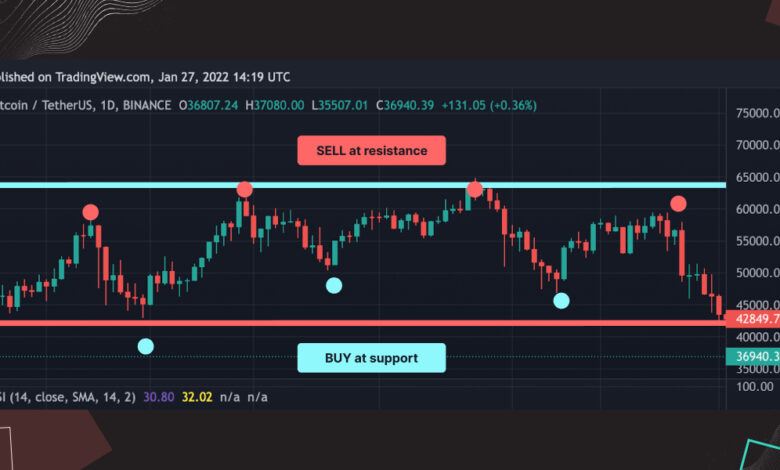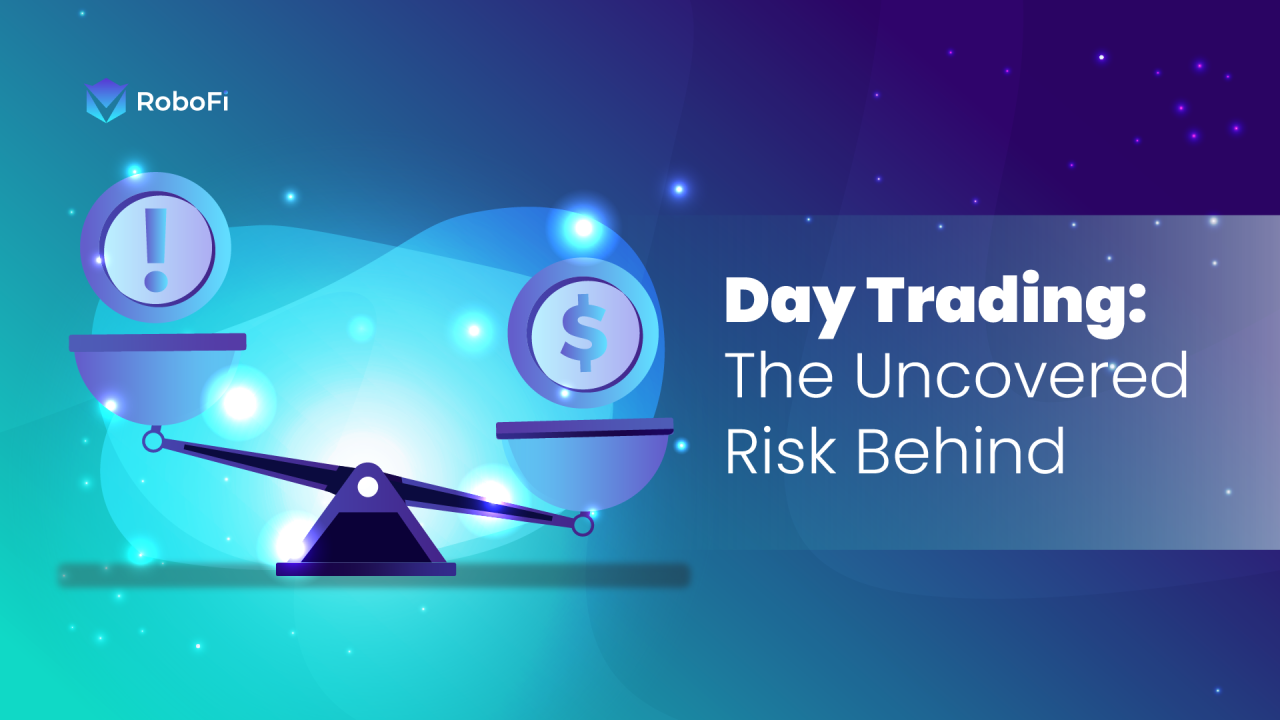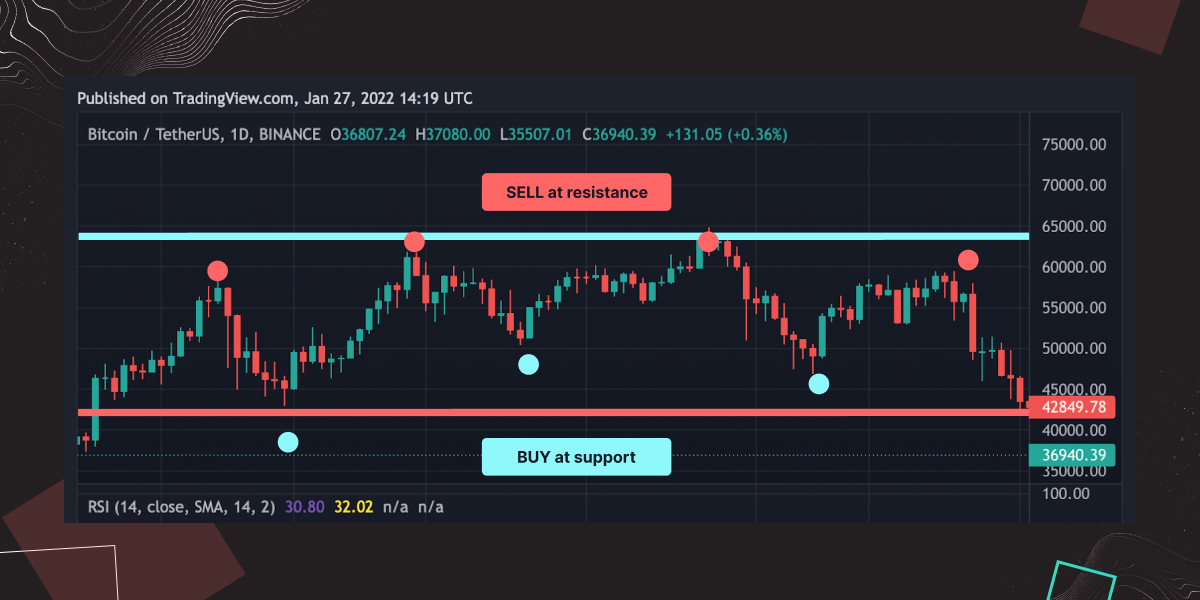
Crypto Day Trading Risks No Strategy, Big Losses
Why Day Trading in Crypto Can Be Risky Without Proper Strategy. Cryptocurrency markets are notoriously volatile, and day trading amplifies those risks significantly. Without a well-defined strategy, impulsive decisions, and a lack of understanding about market dynamics can lead to substantial losses. This post delves into the pitfalls of day trading crypto, highlighting the importance of fundamental and technical analysis, risk management, and emotional control.
This exploration examines the challenges inherent in quick-turnover crypto trading, from the inherent volatility of the market to the psychological pressures involved. We’ll look at how insufficient capital, a lack of fundamental analysis, and the dangers of leverage can quickly erode profits. Ultimately, the post argues that successful day trading requires a comprehensive understanding of market mechanics and careful risk assessment.
Introduction to Day Trading Risks
Day trading in cryptocurrencies involves buying and selling digital assets within a single trading day. This high-frequency approach, while potentially lucrative, exposes traders to significant risks due to the inherent volatility of the market. The constant need to react to price fluctuations demands meticulous attention, potentially leading to emotional decision-making and costly mistakes.
Understanding Cryptocurrency Market Volatility, Why Day Trading in Crypto Can Be Risky Without Proper Strategy
Cryptocurrency markets are notoriously volatile. Price swings can occur rapidly and unpredictably, often driven by news events, regulatory changes, or social media trends. This volatility creates substantial risk for day traders who must anticipate and react to these shifts within very short timeframes. For example, a sudden surge or drop in Bitcoin’s price can wipe out profits or lead to significant losses for those holding leveraged positions.
Time Constraints and Pressure
Day trading demands constant monitoring of market conditions. Traders must be vigilant throughout the day, responding to price movements and identifying potential opportunities. This constant pressure can lead to stress, fatigue, and poor decision-making. Furthermore, missing a single significant price shift can result in substantial losses.
Comparison of Trading Approaches
| Trading Approach | Description | Time Horizon | Risk Profile | Capital Requirement |
|---|---|---|---|---|
| Day Trading | Buying and selling cryptocurrencies within a single trading day. | Very Short | High | Moderate to High |
| Long-Term Holding | Investing in cryptocurrencies for extended periods (months to years). | Long | Moderate | Moderate to Low |
| Swing Trading | Holding positions for several days or weeks, aiming to capture price movements within a defined timeframe. | Medium | Medium | Moderate |
The table above highlights the key differences between day trading and other investment approaches. Note that the risk profile, time horizon, and capital requirements are interconnected. Long-term holding, while lower risk, demands patience and potentially lower returns compared to day trading. Swing trading offers a balance between these two extremes.
Lack of Fundamental Analysis in Day Trading

Source: rattibha.com
Day trading in cryptocurrencies, while potentially lucrative, carries significant risks. A crucial element often overlooked is the absence of fundamental analysis. While technical indicators can provide short-term insights, a deeper understanding of the underlying project’s value and market dynamics is essential for long-term success. Ignoring these fundamentals can lead to poor investment decisions and significant losses.Fundamental analysis plays a vital role in other investment strategies, such as long-term stock picking or evaluating companies.
It delves into the intrinsic value of an asset, considering factors like financial health, management quality, industry trends, and market position. This analysis is particularly important when making investment decisions over extended periods. By understanding the core value of an asset, investors can make more informed decisions and mitigate potential risks.
Importance of Fundamental Analysis in Other Strategies
Fundamental analysis is crucial for evaluating a company’s overall health, financial strength, and future growth potential. It allows investors to understand the factors driving the company’s performance and make informed decisions about its intrinsic value. Consider a company that’s developing a groundbreaking technology. Fundamental analysis would look at the market demand for that technology, the company’s ability to execute its plan, and the potential return on investment for shareholders.
How Relying Solely on Short-Term Price Movements Can Be Detrimental
Focusing solely on short-term price movements, without considering the fundamental value of the asset, can lead to impulsive and potentially disastrous decisions. Day traders often rely on technical indicators, such as moving averages or volume patterns, to predict short-term price fluctuations. However, these indicators do not always reflect the underlying value of the asset. For example, a sudden price spike driven by speculative trading might not indicate long-term value, and the price might reverse if the speculative activity subsides.
Risks of Ignoring Underlying Project Value or News Events
Ignoring the underlying project’s value and relevant news events can expose traders to significant risks. A cryptocurrency project without a solid foundation or a clear roadmap can easily lose value, even if there are short-term price increases. Similarly, significant news events, such as regulatory changes or security breaches, can drastically impact a project’s value, regardless of short-term price trends.
An example is the impact of regulatory scrutiny on certain cryptocurrencies; the sudden announcement of new regulations can quickly depress the price, regardless of previous short-term trends.
Comparison of Fundamental Research in Long-Term and Day Trading
Long-term investors typically conduct extensive fundamental research to assess the intrinsic value of an investment and build a diversified portfolio. This allows them to weather short-term market fluctuations and capitalize on long-term growth opportunities. Conversely, day traders prioritize technical analysis, focusing on short-term price patterns and volatility. They aim to capitalize on small price movements within a single trading day.
This significantly alters the approach and required research.
Technical vs. Fundamental Analysis
| Characteristic | Technical Analysis | Fundamental Analysis |
|---|---|---|
| Focus | Past price and volume data | Intrinsic value and future potential |
| Timeframe | Short-term (minutes to days) | Long-term (weeks to years) |
| Data Sources | Charts, trading volume, indicators | Financial statements, news, industry trends |
| Goal | Predict short-term price movements | Determine the true worth of an asset |
Fundamental analysis provides a more comprehensive understanding of an asset’s true value. This is crucial for both long-term investors and short-term traders to make informed decisions, rather than relying solely on short-term price fluctuations. Technical analysis alone can lead to missed opportunities and significant losses.
Leverage and Margin Trading Dangers
Day trading in crypto, while offering the potential for quick gains, often involves the use of leverage and margin trading. These tools, while amplifying potential profits, can also dramatically magnify losses. Understanding the inherent risks associated with leverage is crucial for any aspiring day trader. Misusing leverage can quickly lead to substantial financial losses.Leverage allows traders to control larger positions than they could with their own capital.
This works by borrowing funds from a broker, and while this can magnify gains, it also significantly amplifies potential losses. The key to successful day trading with leverage is meticulous risk management.
Leverage Amplification
Leverage significantly multiplies both profits and losses. A small price movement can result in substantial gains or losses depending on the leverage used. For example, if a trader uses 10x leverage and the price of a cryptocurrency increases by 1%, their profit will be 10%. Conversely, a 1% decrease in price will result in a 10% loss. This magnification effect makes even minor market fluctuations potentially devastating.
Potential for Substantial Losses
High leverage magnifies the potential for substantial losses. Even a relatively small adverse market movement can result in significant losses exceeding the initial investment. For example, a 5% price drop on a position leveraged 20x could lead to a 100% loss of the initial capital. The risk of substantial loss increases exponentially with higher leverage.
Importance of Risk Management
Risk management is paramount when using leverage. Establishing stop-loss orders and carefully considering position sizing are essential strategies. A well-defined risk tolerance and a trading plan that incorporates risk mitigation strategies are vital for success in day trading. Avoiding emotional decisions driven by market fluctuations is key to managing risk.
Potential Risks of Margin Trading in Crypto
Margin trading in crypto presents a range of risks. These risks include:
- Market Volatility: Crypto markets are notoriously volatile. Sudden price swings can lead to margin calls, forcing traders to deposit more funds or risk losing their positions.
- Liquidation Risks: Margin calls can result in forced liquidation of positions if traders fail to meet the required margin calls. This can lead to substantial losses.
- Impermanent Loss: In the case of leveraged token swaps or lending, impermanent loss can occur due to the changing price ratio of the two tokens involved. This loss is often not directly related to margin calls.
- Counterparty Risk: The risk that the broker or exchange might not fulfill their obligations, leading to potential losses.
- Security Risks: Crypto exchanges and brokers are susceptible to hacks and security breaches. These breaches could expose traders to losses or the theft of funds.
Leverage Levels and Associated Risks
The following table illustrates the varying degrees of risk associated with different leverage levels.
Day trading crypto can be a whirlwind of volatility, and without a rock-solid strategy, it’s a recipe for disaster. Understanding market fluctuations and having a well-defined risk tolerance are crucial, but even more important is implementing robust security measures. For example, knowing how to protect your private keys and wallets is absolutely essential, as outlined in this helpful guide on Essential Security Practices Every Cryptocurrency Investor Should Know Today.
Ultimately, a strong security foundation is just as important as a trading plan when navigating the unpredictable crypto market.
| Leverage Level | Potential Profit Magnification | Potential Loss Magnification | Risk Assessment |
|---|---|---|---|
| 2x | 2 times | 2 times | Moderate |
| 5x | 5 times | 5 times | High |
| 10x | 10 times | 10 times | Very High |
| 20x | 20 times | 20 times | Extremely High |
Note that the risk assessment is subjective and depends on individual trading styles and market conditions. A trader with a robust risk management strategy might perceive a 10x leverage position as less risky than a trader who lacks such a strategy.
Emotional Factors and Trading Decisions
Day trading in cryptocurrencies, while potentially lucrative, is fraught with emotional challenges. The rapid price fluctuations and the constant pressure to make quick profits can trigger intense emotional responses, significantly impacting trading decisions. Understanding these emotional pitfalls and developing strategies to manage them is crucial for long-term success.Uncontrolled emotions often lead to impulsive decisions, hindering rational judgment and increasing the likelihood of significant losses.
Recognizing the influence of fear and greed on trading behavior is the first step toward building a more resilient and profitable trading approach. A trader who can effectively manage their emotions is more likely to follow a well-defined trading plan and resist the temptation of making hasty moves.
The Role of Fear and Greed
Fear and greed are powerful motivators in the financial markets. Fear, in the context of day trading, can manifest as the fear of missing out (FOMO) or the fear of loss, leading to impulsive decisions to sell assets prematurely or to over-leverage positions to avoid a potential loss. Greed, on the other hand, can drive traders to hold onto positions longer than they should, potentially missing out on profitable opportunities or taking on excessive risk in pursuit of larger profits.
The interplay of these two emotions can create a volatile environment, making it difficult to make rational trading decisions.
Impact of Emotions on Trading Strategies
Emotional responses can significantly distort trading strategies. Fear might cause a trader to exit a profitable position too early, missing out on potential gains. Greed, conversely, might encourage a trader to hold onto a losing position for too long, hoping for a recovery that may not materialize. This emotional bias can override logical analysis, leading to poor trading decisions and substantial financial losses.
Importance of Emotional Control
Emotional control is paramount in day trading. A disciplined trader understands that emotions should not dictate trading decisions. A robust trading plan, coupled with a well-defined risk management strategy, can help mitigate the negative effects of emotional volatility. This includes pre-determined entry and exit points, stop-loss orders, and a clear understanding of one’s risk tolerance. Such strategies can significantly reduce the influence of emotional pressures on trading choices.
Techniques for Managing Emotions During Market Fluctuations
Managing emotions during market fluctuations is an essential skill for any day trader. Several techniques can help maintain emotional equilibrium. These include meditation, mindfulness practices, and journaling. These methods can foster a sense of calm and detachment, allowing traders to assess market conditions objectively and make rational decisions. Also, establishing a routine, including regular breaks, can prevent burnout and promote clarity of thought.
Common Emotional Pitfalls in Day Trading and Mitigation Strategies
| Emotional Pitfall | Description | Mitigation Strategy |
|---|---|---|
| Fear of Missing Out (FOMO) | The urge to jump into a trade driven by the perceived potential for significant gains, often without thorough analysis. | Develop a robust trading plan with clear entry and exit points. Stick to the plan, regardless of market sentiment. |
| Fear of Loss | The desire to avoid losses, leading to premature exits from profitable trades or aggressive risk-taking to recoup losses. | Implement strict stop-loss orders to limit potential losses. Focus on the long-term strategy, not short-term fluctuations. |
| Greed | The desire to maximize profits, leading to holding onto losing positions or taking on excessive risk. | Set realistic profit targets and stick to them. Avoid chasing after quick gains. Maintain a clear understanding of risk tolerance. |
| Impatience | The tendency to act quickly without sufficient analysis, often leading to poor decisions. | Develop a disciplined approach to trading, focusing on thorough analysis before making any decisions. Allow time for market conditions to unfold. |
Technical Analysis Limitations in Day Trading

Source: robofi.io
Technical analysis, while a valuable tool for identifying potential trading opportunities, has inherent limitations in the fast-paced world of day trading. Understanding these limitations is crucial for mitigating risk and developing a robust trading strategy. Over-reliance on technical indicators can lead to costly mistakes, particularly in crypto markets with their volatility and unique characteristics.Technical indicators, by their nature, are derived from past market data.
This historical information, while potentially revealing patterns, doesn’t guarantee future price movements. The market is constantly evolving, and past performance is rarely a perfect predictor of future results. Consequently, technical signals can often be misleading, leading to incorrect trading decisions.
False Signals from Technical Indicators
Technical indicators are often prone to generating false signals, which can lead to unprofitable trades or even significant losses. These signals can appear as trends, support/resistance levels, or other patterns that don’t materialize in the market. Recognizing and avoiding these false signals is a key aspect of successful day trading.
Examples of Misleading Indicators
Several technical indicators can produce misleading signals. For instance, the Relative Strength Index (RSI) can signal an overbought or oversold condition, potentially suggesting a reversal, but this signal might not always translate into a significant price shift. Similarly, moving averages, while useful for identifying trends, can sometimes lag behind the current market conditions, creating false signals. Volume indicators, though seemingly indicative of market strength, can be affected by short-term market fluctuations, leading to erroneous interpretations.
Importance of Confirming Signals from Multiple Indicators
To reduce the risk of false signals, it’s crucial to confirm signals from multiple technical indicators. A confluence of signals from different indicators, like RSI, moving averages, and volume, strengthens the reliability of the potential trading opportunity. This approach helps to filter out random fluctuations and focus on more substantial trends.
Day trading in crypto can be a wild ride without a solid strategy. High volatility and unpredictable market swings make it easy to lose your shirt quickly. While the future of finance is likely to be shaped by blockchain technology, as explored in this insightful article on Why Blockchain Adoption Will Shape the Future of Global Economy , understanding the intricacies of crypto market mechanics and developing a well-defined plan are crucial for success.
Ultimately, a lack of proper strategy can lead to significant financial losses in day trading.
Over-reliance on Technical Analysis
A common pitfall in day trading is over-reliance on technical analysis. While helpful, technical analysis should not be the sole basis for trading decisions. It’s essential to consider fundamental factors, news events, and market sentiment alongside technical signals. A balanced approach, integrating technical analysis with other market insights, provides a more comprehensive understanding of the market.
Table of Common Technical Indicators and Potential Pitfalls
| Indicator | Potential Pitfalls |
|---|---|
| Moving Averages | Can lag behind current market trends, producing false signals during rapid price changes. |
| Relative Strength Index (RSI) | May generate false overbought/oversold signals, not always translating into significant price reversals. |
| Volume Indicators | Can be affected by short-term market fluctuations, leading to inaccurate assessments of market strength. |
| Bollinger Bands | Can produce false breakout signals, particularly during periods of high volatility. |
| MACD (Moving Average Convergence Divergence) | Can generate false signals, especially during periods of consolidation or sideways price action. |
Market Volatility and Price Swings: Why Day Trading In Crypto Can Be Risky Without Proper Strategy
Cryptocurrency markets are notoriously volatile, exhibiting rapid and significant price fluctuations. This inherent instability presents a major risk for day traders, as seemingly minor price swings can quickly translate into substantial losses. Understanding and managing this volatility is crucial for navigating the day trading landscape safely and effectively.Sudden price movements can quickly erode profits accumulated from seemingly successful trades.
A sharp downturn can lead to substantial losses in a short timeframe, potentially wiping out gains from earlier profitable trades. This unpredictability necessitates a robust risk management strategy tailored to the dynamic nature of the crypto market.
Understanding Inherent Volatility
Cryptocurrency markets are characterized by high volatility, often driven by news events, regulatory changes, and market sentiment shifts. This volatility can lead to substantial price swings in short periods, making it challenging to maintain consistent profits. The lack of established regulatory frameworks and the decentralized nature of the markets contribute to this volatility.
Impact on Day Trading Profits
Sudden price swings can quickly wipe out day trading profits. A trader who enters a position at a specific price level, expecting a gradual movement, may experience a significant and unexpected price drop, resulting in substantial losses. Such sudden fluctuations can significantly impact the overall profitability and sustainability of a day trading strategy.
Historical Examples of Price Fluctuations
Several significant price fluctuations have occurred throughout the history of cryptocurrencies. The 2017-2018 bull run, followed by a sharp decline, serves as a prime example. Similar price drops have been observed in other cryptocurrencies during periods of market uncertainty or negative news events. Examining historical data can help traders understand the magnitude and frequency of these fluctuations. For example, the crash of 2018 highlighted the extreme volatility of cryptocurrencies and the potential for substantial losses.
Strategies for Managing Risk During Volatile Periods
Implementing strategies for risk management during volatile periods is essential for mitigating losses. This includes setting stop-loss orders, limiting position sizes, and employing diversification strategies.
Risk Tolerance Assessment for Day Trading
Evaluating risk tolerance is crucial for determining suitable trading strategies. This involves understanding your personal financial situation, comfort level with risk, and capacity to absorb potential losses. Assessing risk tolerance involves considering factors like the amount of capital at risk, the frequency of trades, and the potential for substantial losses. Quantitative methods for calculating risk tolerance can be applied, such as calculating the maximum tolerable loss percentage.
A realistic assessment of risk tolerance is critical for developing a day trading strategy that aligns with individual circumstances.
Insufficient Capital and Trading Capital Management
Day trading in crypto, while potentially lucrative, carries significant risks. One crucial element often overlooked is the importance of having sufficient capital and a robust trading capital management plan. A well-structured approach can significantly mitigate the risks associated with insufficient funds and volatile market conditions. Proper capital management is not just about having enough money; it’s about strategically allocating resources and protecting your investments.
Day trading crypto without a solid strategy is a recipe for disaster. The market’s volatility can quickly wipe out your gains if you’re not careful. Instead of risking it all on short-term fluctuations, explore alternative ways to earn crypto, like passive income streams. For example, you can check out this guide on How to Make Money in Crypto Without Trading or Mining to discover opportunities outside the volatile world of day trading.
Ultimately, understanding the risks and having a well-defined strategy is crucial for success in any investment, especially in the unpredictable crypto market.
Importance of Sufficient Capital
Having sufficient capital is fundamental to day trading success. It acts as a buffer against potential losses. A smaller capital base makes it harder to withstand market fluctuations and recover from losing trades. Insufficient funds can lead to forced liquidation of positions at unfavorable prices, compounding the losses and potentially leading to significant financial distress. Adequate capital allows for more flexibility and better risk management strategies.
Risks of Insufficient Capital and Capital Management
Insufficient capital significantly increases the risk of substantial losses. If a series of trades goes against your expectations, you may not have the necessary funds to cover the losses. This can lead to a cascade effect, where further losses erode your capital base and make it harder to recover. Poor capital management, characterized by aggressive trading with insufficient funds, is a recipe for disaster.
Stop-Loss Orders and Take-Profit Targets
Setting stop-loss orders and take-profit targets are crucial components of a sound capital management plan. Stop-loss orders automatically sell a position when the price reaches a predetermined level, limiting potential losses. Take-profit targets automatically sell a position when the price reaches a predefined target, locking in profits. These tools are critical for mitigating risk and managing emotions.
Position Sizing
Position sizing is the process of determining the appropriate amount of capital to allocate to each trade. This is vital for risk management. A proper position sizing strategy helps to avoid over-leveraging or over-exposing your capital to any single trade. If one trade goes wrong, the impact on your overall portfolio is minimized. A common strategy is to allocate a fixed percentage of your capital to each trade, ensuring that a single adverse trade does not significantly impact your overall portfolio.
Steps for Establishing a Robust Trading Capital Management Plan
| Step | Action |
|---|---|
| 1 | Define your risk tolerance: Assess your comfort level with potential losses and determine the maximum percentage of your capital you are willing to risk on a single trade. |
| 2 | Set realistic profit targets: Establish clear and attainable profit goals for each trade, balancing the potential reward with the inherent risk. |
| 3 | Determine position size: Calculate the appropriate amount of capital to allocate to each trade based on your risk tolerance and the potential reward. Use a fixed percentage of your capital for each trade. |
| 4 | Implement stop-loss orders: Establish predetermined stop-loss levels for each trade to limit potential losses. |
| 5 | Implement take-profit targets: Set predefined take-profit levels to lock in profits and avoid missing out on potential gains. |
| 6 | Monitor and adjust your plan: Continuously monitor your trading performance and adjust your capital management plan as needed based on market conditions and your trading experience. |
| 7 | Document your plan: Maintain detailed records of your trades, including entry and exit points, profit/loss, and position sizes, to identify patterns and improve your strategies over time. |
Regulatory and Legal Aspects of Crypto Day Trading
The burgeoning cryptocurrency market presents exciting opportunities but also inherent risks. One crucial aspect often overlooked is the evolving regulatory landscape. Understanding the legal and regulatory framework surrounding crypto day trading is paramount for mitigating potential pitfalls and ensuring a safer trading experience. The lack of clear, consistent regulations across jurisdictions adds another layer of complexity to the already volatile world of crypto.The regulatory environment for cryptocurrencies is constantly shifting.
Governments worldwide are grappling with how to regulate digital assets, balancing the need for investor protection with fostering innovation. This dynamic nature necessitates vigilance and continuous learning for anyone involved in crypto day trading.
Evolving Regulatory Landscape for Cryptocurrencies
The lack of a universally accepted regulatory framework for cryptocurrencies is a significant concern. Different countries and regions have adopted various approaches, ranging from outright bans to nascent regulatory frameworks. This lack of uniformity creates challenges for investors, as they must navigate different legal requirements in each jurisdiction. The absence of clear guidelines can lead to uncertainty and confusion regarding legal compliance.
Potential Legal and Regulatory Risks in Day Trading
Crypto day trading carries specific legal and regulatory risks that differ from traditional financial markets. These risks can arise from unexpected changes in regulations, the lack of a central authority to oversee crypto markets, or the potential for regulatory conflicts between jurisdictions. Failure to adhere to evolving regulations can lead to significant penalties and legal repercussions.
Relevant Regulations and Their Applicability
Several regulations and legal frameworks are relevant to crypto day trading, but their applicability can vary greatly depending on the jurisdiction. For instance, securities laws might be applied to crypto assets depending on their classification, while money laundering regulations are generally applicable across the board. Understanding the specific laws and regulations that govern crypto trading in your location is essential.
Importance of Staying Informed About Regulatory Changes
The regulatory landscape for cryptocurrencies is constantly evolving, with new laws and rules emerging frequently. Staying informed about these changes is crucial for navigating the complexities of crypto day trading. Crypto traders should actively monitor regulatory updates from relevant authorities and consult legal professionals if necessary. Regular updates and constant monitoring are crucial to mitigate risks and ensure compliance.
Examples of Regulatory Issues Affecting Day Trading
Several examples illustrate the challenges presented by evolving regulations in crypto day trading. For example, the classification of certain crypto assets as securities in certain jurisdictions can significantly impact how they can be traded. Also, regulations regarding anti-money laundering (AML) and know-your-customer (KYC) are crucial in maintaining the integrity of the market. The absence of clear guidelines on taxation for crypto gains and losses can create additional challenges for traders.
In some regions, day trading of certain cryptocurrencies may be restricted entirely. This highlights the importance of diligent research and compliance to avoid legal entanglements.
Ending Remarks

Source: ctfassets.net
In conclusion, day trading in crypto carries significant risks without a robust strategy. The inherent volatility, emotional pressures, and potential for rapid losses demand a cautious approach. Thorough research, risk management, and a disciplined mindset are crucial for navigating the unpredictable world of crypto day trading. If you’re considering this approach, proceed with extreme caution and prioritize learning over quick gains.
Detailed FAQs
What’s the difference between day trading and swing trading?
Day trading involves holding positions for a few hours or a day, while swing trading holds positions for several days or weeks. Day trading often relies heavily on technical analysis and is much faster-paced.
How can I manage emotions during market fluctuations?
Developing a trading plan and sticking to it is crucial. Also, using tools like journaling or meditation can help in managing emotions during periods of market volatility.
What are some common pitfalls of relying solely on technical indicators?
Technical indicators can provide signals, but they’re often prone to false signals and don’t always reflect underlying value. Always combine technical analysis with fundamental research.
What’s the importance of setting stop-loss orders?
Stop-loss orders limit potential losses by automatically selling a security when it reaches a certain price. This is essential for risk management in any trading strategy.






